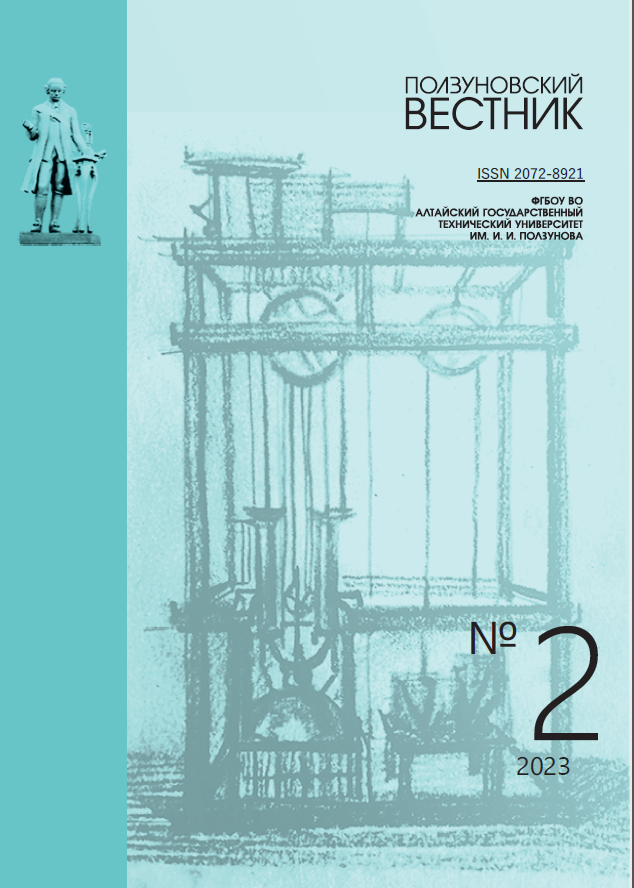GLUTEN AND PROTEIN CONTENT IN INDIVIDUAL FLOWS OF TRITICALIC FLOUR OBTAINED WHEN VARIETAL GRINDING
XBKHEU
DOI:
https://doi.org/10.25712/ASTU.2072-8921.2023.02.009Keywords:
triticale, torn and grinding systems, flour flow, quantity and quality of gluten, protein content, bran.Abstract
The actual directions of development of one of the most important branches of the processing industry - flour milling - are both the improvement of technologies for processing traditional crops (wheat and rye) and the development of new technologies for processing non-traditional crops, such as triticale. The purpose of the presented studies is a comparative assessment of the distribution of protein and gluten content of individual flows of triticale flour obtained from different varieties of triticale grains during varietal milling. According to the results of the experiments, all 12 flows of triticale flour obtained by varietal grinding of all 6 presented samples of triticale grains have a different amount of gluten and total protein content. It was revealed that the triticale flour obtained on the 2 nd grinding system has the highest gluten content, and the flow of triticale flour obtained on the 1st torn system has the lowest gluten content for all the presented triticale grain samples. At the same time, the flow of flour from the triticale grain of the Skolot variety, which amounted to 26.6 %, differs in the maximum gluten content, and the flow of flour from the triticale grain of the Tribun variety, which amounted to 19.6 %, has the lowest gluten content. It was revealed that the highest content of total protein was found in stream No. 12 of triticale flour from grain of the Donslav variety, obtained on a grinding system, which amounted to 24.5 %, and the lowest content of total protein in individual streams was found when grinding grain of triticale of the Consul variety in stream No. 12, obtained on the grinding system, which amounted to only 12.7 %, which is almost two times lower compared to the same flow of flour from Donslav variety triticale grain.
References
Андреев Н.Р., Гольдштейн В.Г., Носов-ская Л.П., Адикаева Л.В. Переработка муки тритикале на клейковину и крахмал // Хранение и пере-работка сельхозсырья. 2017. № 9. С. 8–11.
Андреев Н.Р., Колпакова В.В., Гольдештейн В.Г. К вопросу глубокой переработки зерна тритикале // Пищевая промышленность. 2018. № 9. С. 30–33.
Витол И.С., Мелешкина Е.П., Кандро-ков Р.Х., Вережникова И.А., Карпиленко Г.П. Био-химическая характеристика новых сортов трити-калевой муки // Хлебопродукты. 2016. № 2. С. 42–44.
Витол И.С., Мелешкина Е.П., Кандроков Р.Х. Продукты переработки зерна тритикале как объект для ферментативной модификации // Хранение и переработка сельхозсырья. 2016. № 9. С. 14–17.
Дулаев В.Г. Кандроков Р.Х. Фракционная технология производства макаронной муки из твердой пшеницы // Хлебопродукты. 2009. № 10. С. 50–52.
Кандроков Р.Х. Технология переработки зерна тритикале в крупу типа «манная» / Р.Х. Кандроков, Г.Н. Панкратов // Хлебопродукты. 2017. № 1. С. 52–54.
Кандроков Р.Х. Технологические свойства пшенично-тритикалевой муки // Вестник ЮУрГУ. Серия «Пищевые и биотехнологии». 2019. Т. 7., № 3. С. 13–22.
Кандроков Р.Х., Панкратов Г.Н. Разработка эффективной технологической схемы переработки зерна тритикале в сортовую хлебопекарную муку // Российская сельскохозяйственная наука. 2019. Т. 1. № 1. C. 62–65. doi: 10.31857/S2500-26272019162-65.
Мелешкина Е.П., Панкратов Г.Н., Кандроков Р.Х., Витол И.С. Технологические и биохимические показатели как составляющие качества муки тритикале // Контроль качества продукции. 2017. № 2. С. 38–44.
Кандроков Р.Х., Балова Е.Р. Влияние гидротермической обработки на выход и качество полбяной муки // Аграрный вестник Урала. № 2 (168). 2018. С. 54–58.
Мелешкина Е.П., Панкратов Г.Н., Панкратьева И.А., Чиркова Л.В., Кандроков Р.Х., Витол И.С., Игорянова Н.А., Политуха О.В., Туляков Д.Г. Тритикале (технологии переработки). Монография / под ред. Е.П. Мелешкиной. М. : Изд-во ФЛИНТА. 2018. 188 с. ISBN 978-5-9765-3813-9.
Мелешкина, Е.П., Панкратов Г.Н., Витол И.С., Кандроков Р.Х. Новые функциональные продукты из двухкомпонентной зерновой смеси пшеницы и льна, полученные с использованием биотехнологических методов // Вестник российской сельскохозяйственной науки. 2019. № 2 С. 54–58. https: //doi.org /10.30850 /vrsn/2019/2/54-58.
Панкратов, Г.Н., Мелешкина Е.П., Кан-дроков Р.Х., Витол И.С. Технологические свойства новых сортов тритикалевой муки // Хлебопродукты. 2016. № 1. С. 60.
Панкратов, Г.Н. Процесс измельчения зерна тритикале / Г.Н. Панкратов, Р.Х. Кандроков, Е.В. Щербакова // Хлебопродукты. 2016. № 10. С. 59.
Туляков, Д.Г., Мелешкина Е.П., Витол И.С., Панкратов Г.Н., Кандроков Р.Х. Оценка свойств муки из зерна тритикале с использованием системы Миксолаб / Д.Г. Туляков // Хранение и переработка сельхозсырья. 2017. № 1. С. 20–23.
Grabovets A.I., Krokhmal A.V., Dremucheva G.F., Karchevskaya O.E. Breeding of triticale for bak-ing purposes. Russ. Agric. Sci, 2013, no. 39, pp. 197–202. DOI: 10.3103/S1068367413030087.
He M.L., McAllister T.A., Hernandez-Calva L.M., Aalhus J.L., Dugan MER, McKinnon J.J. Effect of dietary inclusion of triticale dried distillers’ grain and oilseeds on quality and fatty acid profile of meat from feedlot steers. Meat Sci., 2014, no. 97., pp. 76–82.
Kandrokov R.H., Pankratov G.N., Melesh-kina E.P., Vitol I.S. and Tulyakov D.G. Effective tech-nological scheme for processing triticale grain into high-quality baker’s grade flour. Foods and Raw Ma-terials, 2019, vol. 7, no. 1, pp. 107–117. DOI: http://doi.org/10.21603/2308-4057-2019-1-107-117.
Meleshkina E.P., Pankratov G.N., Vitol I.S., Kandrokov R.H. and Tulyakov D.G. Innovative Trends in the Development of Advanced Triticale Grain Pro-cessing Technology. Foods and Raw Materials, 2017, vol. 5, no. 2, pp. 70–82. DOI: 10.21179/2308-4057-2017-2-70-82.
Downloads
Published
How to Cite
Issue
Section
License
Copyright (c) 2023 Roman Kh. Kondrakov, Valentin A.

This work is licensed under a Creative Commons Attribution 4.0 International License.















 .
. This work is licensed under a
This work is licensed under a 
